|
|
 |
|
Narrowband Television Narrowband television is a new venture for me, this page comprises some of the things that Narrowband television is a means of transmitting television using bandwidths of less than 20kHz. John The Nipkow disk consists of a disk of opaque material, with a spiral of holes near its edge. If the disk is spun, then any image viewed through it will be split up into a series of curved lines. This is the basis of the original Baird television system. The camera consisted of a Nipkow disk, a lens and a photocell. The receiver was very similar except that the photocell was replaced by a special neon lamp.
|
|
|
|||||||||||||||||||||||||||||||||||||||||||||||||||||||||||||||||||||||||||||||||||||||||||||||||||||||||||||||||||||||||||||||||||||||||||||||||||||||||||||||||||||||||||||||||||||||||||||||
|
Junkbox NBTV monitor This is the first monitor I have built, my main idea was not to buy anything, just to use what I had in my relatively small junkbox. It is very basic, with no synchronisation. The first thing I needed was a Nipkow disk If you click on the image and save it, you can print it out to whatever size you need, it is in .gif format. I printed mine on 140gsm card, then pierced the holes with a fine sewing needle. Actually the print wasn’t quite as dark as I wanted, so I went over it with a black permanent marker pen. Next I needed a small electric motor and something to mount the disk on. Now I needed to control the speed of the motor, I could have used a simple variable resistor, but I didn’t have a suitable one to hand. Instead I made a simple circuit, using a darlington pair,You
Next I needed two LEDs I simply selected the brightest orange ones I had, which were
The completed version is on the right, you can just see the viewing window on the right of the case. The case is made from black card from the local art shop, it was the simplest way of cutting stray light. The lens was from an old magnifier, and is about 2.5cm in diameter with a fairly short focal length. The image is viewable in normal light This is a very brief clip of a checkerboard testcard viewed on this monitor. It actually looks a bit better in real life, but I was using a webcam, focused on the disk. A few more projects are under way, I have just completed a waveform generator, and am currently working on a monitor using the 12” Nipkow disk which can be bought by members of the NBTVA. The other projects underway are a mechanical camera and a circuit to enable images to be viewed on an oscilloscope. If you want to find out more about narrow bandwidth television then visit the NBTVA website. |
| [Home] [Famous hams] [Links] [Non radio] [Circuits] [Software] [News] [WX sats.] [National societies] [Special Interest] [NBTV] [Safety] [Radio museums] [Amateur science] |














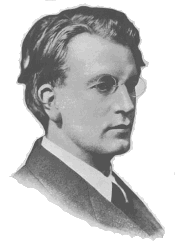 inspired me to have a go, plus a bit about my first experiments!
inspired me to have a go, plus a bit about my first experiments!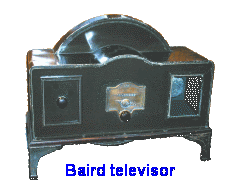

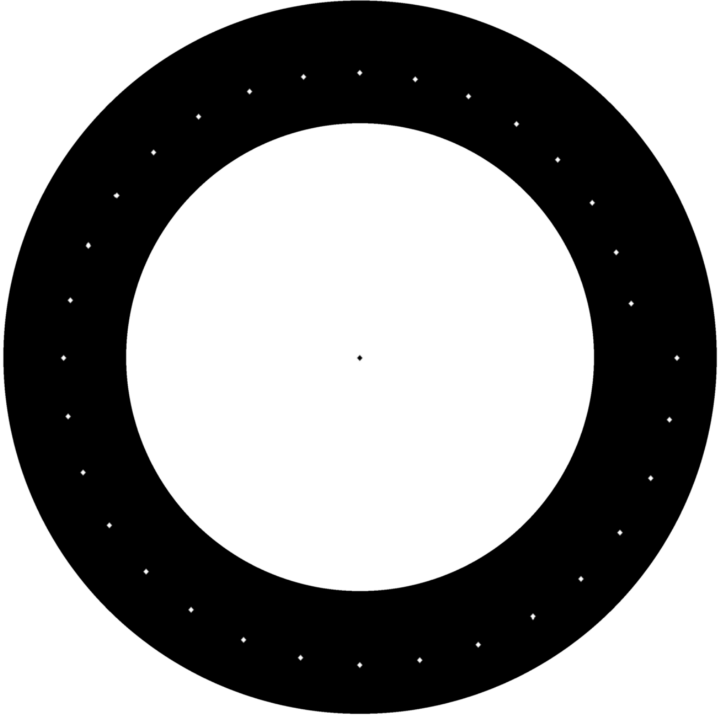
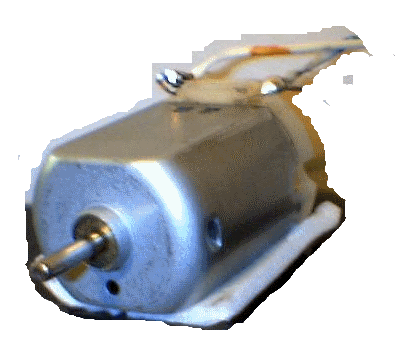 In my my collection of bits I found an electric motor that had come from a child’s toy. It ran happily between 1 and 3 volts. (In the UK, Maplin do a similar one cat. no.
In my my collection of bits I found an electric motor that had come from a child’s toy. It ran happily between 1 and 3 volts. (In the UK, Maplin do a similar one cat. no.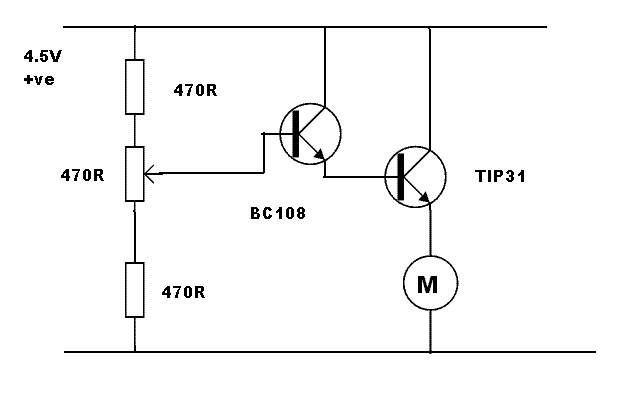
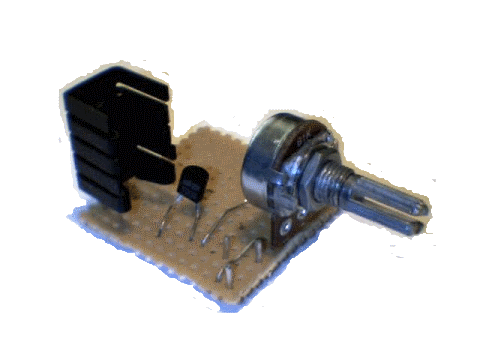 so dissipation. You may need to alter the values of the resistors and pots to suit your motor, all three in series should total about 1k0 to 10k. I have since added a 0.47uFd capacitor across the motor terminals, it seems to improve the image by smoothing the speed of the motor. (You can download a larger
so dissipation. You may need to alter the values of the resistors and pots to suit your motor, all three in series should total about 1k0 to 10k. I have since added a 0.47uFd capacitor across the motor terminals, it seems to improve the image by smoothing the speed of the motor. (You can download a larger 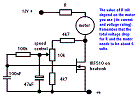
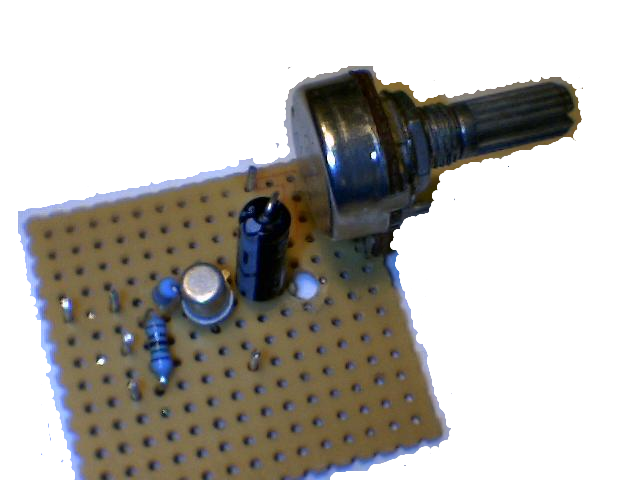 rated at
rated at 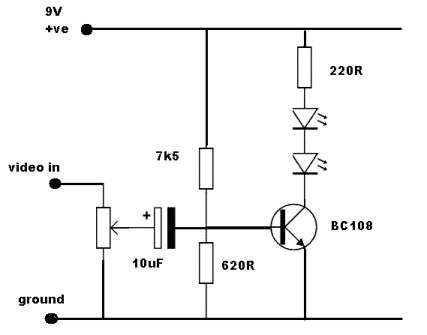
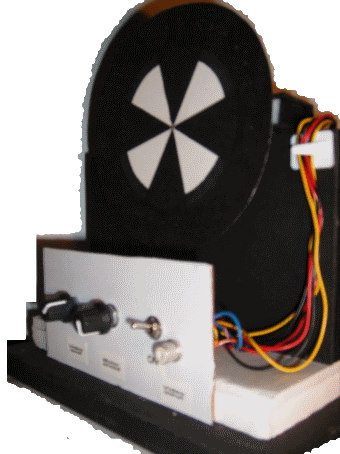 The almost finished project is shown on the left. To get an impression of the size, the disk is the same size as a CD, and the image is about 1cm high! Still it works ok with testcard images played on my PC CD-rom drive and with the NBTVA triple waveform generator.
The almost finished project is shown on the left. To get an impression of the size, the disk is the same size as a CD, and the image is about 1cm high! Still it works ok with testcard images played on my PC CD-rom drive and with the NBTVA triple waveform generator.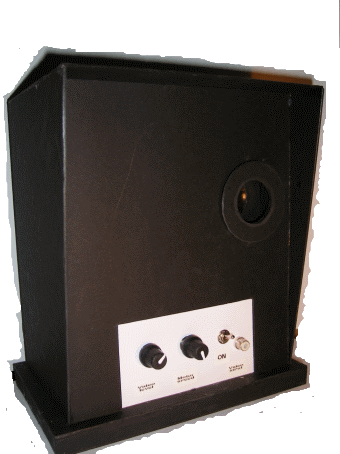 The only real problems are that the motor is not synchronised, so that you need to keep adjusting the motor speed control to keep the image stable, and the accuracy of the holes in the disk. Both of these are problems that were encountered by John Logie baird, so I don’t feel at all disappointed.
The only real problems are that the motor is not synchronised, so that you need to keep adjusting the motor speed control to keep the image stable, and the accuracy of the holes in the disk. Both of these are problems that were encountered by John Logie baird, so I don’t feel at all disappointed.